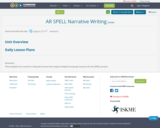
This template was created to help plan lessons that support English Language Learners for the SPELL project.
- Subject:
- Arts and Humanities
- Mathematics
- Social Science
- Material Type:
- Lesson Plan
- Date Added:
- 09/20/2013

This template was created to help plan lessons that support English Language Learners for the SPELL project.
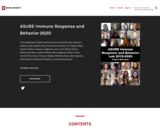
Our class is part of Arts and Sciences Undergraduate Research Experience (ASURE) at Indiana University Bloomington. This program, which is part of the College of Arts and Sciences, includes a two-semester lab experience where students design and conduct their own authentic research projects. All of the projects described in this eBook were designed and carried out by small groups of students in their first through second year of college as part of their course work in the ASURE Immune Response and Behavior Lab. The ASURE class of 2019-2020 certainly faced some unique challenges. In the spring of 2020, we were abruptly sent home to continue our coursework remotely. This interruption reduced the students’ time to collect data in the lab, but gave them the opportunity to learn R and other data analysis skills. In the fall of 2020, all of the students were able to return to campus and continue work on their projects, though there were several interruptions as students were forced to isolate and/or quarantine. Nevertheless, the students were very dedicated and persisted in their work, which is evident in their final projects.
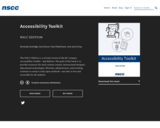
NSCC EDITION
Short Description:
The NSCC Edition is a revised version of the BC Campus Accessibility Toolkit - 2nd Edition. The goal of this book is to provide resources for each content creator, instructional designer, educational technologist, librarian, administrator, and teaching assistant to create a truly open textbook—one that is free and accessible for all students.
Word Count: 13596
ISBN: 978-1-77420-030-8
(Note: This resource's metadata has been created automatically by reformatting and/or combining the information that the author initially provided as part of a bulk import process.)
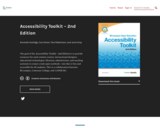
Short Description:
The goal of the Accessibility Toolkit - 2nd Edition is to provide resources for each content creator, instructional designer, educational technologist, librarian, administrator, and teaching assistant to create a truly open textbook—one that is free and accessible for all students. This is a collaboration between BCcampus, Camosun College, and CAPER-BC.
Long Description:
The goal of the Accessibility Toolkit – 2nd Edition is to provide resources for each content creator, instructional designer, educational technologist, librarian, administrator, and teaching assistant to create a truly open textbook—one that is free and accessible for all students.
This second edition has built upon, and improved, the original toolkit—a collaboration between BCcampus, Camosun College, and CAPER-BC—with a new “Accessibility Statements” chapter, bibliography and list of links by chapter for print users in the back matter, updated information, and corrections to content, style and layout.
The French translation of the first edition of the Accessibility Toolkit—La Trousse d’outils d’accessibilité —is still available. In time, a French translation of this second edition will be made available.
Word Count: 14908
ISBN: 978-1-77420-030-8
(Note: This resource's metadata has been created automatically by reformatting and/or combining the information that the author initially provided as part of a bulk import process.)
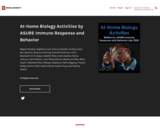
These activities were written by students in the ASURE Immune Response and Behavior Lab at Indiana University Bloomington. Each “chapter” shows an activity designed to introduce kids to a biology-related topic, which can be taught and led by their parents all with common household items. We hope that they’re helpful and fun for you to complete with your kids!
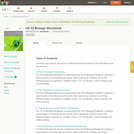
CK-12 Biology Workbook complements its CK-12 Biology book.

Short Description:
This text introduces copyright, publishing formats, note-taking formats, citation styles, source evaluation, library organization, library resources and services, and effective search practices using online databases and Internet search engines.
Long Description:
This is a practical guide to college-level research for freshman, to prepare them for research projects in all disciplines. Topics include an introduction to copyright, publishing formats, note-taking styles, reading tips for advanced information, citation styles and source evaluation. The text leads students through the research process, from selecting a topic, locating and evaluating sources for credibility, developing a citation for each source and guidance about compiling the material using APA (7th ed.) and MLA (8th ed.) standards.
Word Count: 24502
(Note: This resource's metadata has been created automatically by reformatting and/or combining the information that the author initially provided as part of a bulk import process.)
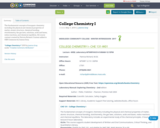
The fundamental concepts of inorganic chemistry including the physical and chemical properties of matter, atomic structure, chemical bonding, stoichiometry, the gas laws, solutions, acids and bases, redox reactions, and chemical equilibria. All course content created by Patricia Richard. Content added to OER Commons by Joanna Gray.

When you combine the sheer scale and range of digital information now available with a journalist’s "nose for news" and her ability to tell a compelling story, a new world of possibility opens up. With The Data Journalism Handbook, you’ll explore the potential, limits, and applied uses of this new and fascinating field.
This valuable handbook has attracted scores of contributors since the European Journalism Centre and the Open Knowledge Foundation launched the project at MozFest 2011. Through a collection of tips and techniques from leading journalists, professors, software developers, and data analysts, you’ll learn how data can be either the source of data journalism or a tool with which the story is told—or both.
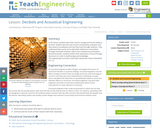
In this lesson, students learn that sound is energy and has the ability to do work. Students discover that sound is produced by a vibration and they observe soundwaves and how they travel through mediums. They understand that sound can be absorbed, reflected or transmitted. Through associated activities, videos and a PowerPoint presentation led by the teacher, students further their exploration of sound through discussions in order to build background knowledge.
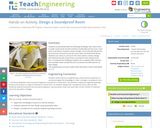
Students are presented with the following challenge: their new school is under construction and the architect accidentally put the music room next to the library. Students need to design a room that will absorb the most amount of sound so that the music does not disturb the library. Students use a box as a proxy for the room need to create a design that will decrease the sound that is coming from the outside of the box. To evaluate this challenge, students use a speaker within the box and a decibel meter outside the box to measure the effectiveness of their design.
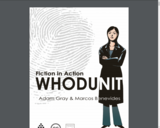
This book is calls itself a “bridge to extensive reading.” It has two longer, engaging stories and takes a playful approach to reading comprehension. For example, students complete a puzzle or a draw a picture of crime scene to show what they have understood. It also has interesting features, like fingerprints on the page, to draw attention to key details.

A Field Guide to “Fake News” and Other Information Disorders explores the use of digital methods to study false viral news, political memes, trolling practices and their social life online. It responds to an increasing demand for understanding the interplay between digital platforms, misleading information, propaganda and viral content practices, and their influence on politics and public life in democratic societies.
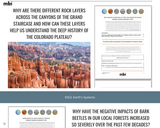
Understanding geologic time is a core idea in science that has deep connections to other areas of geology (e.g.,
plate tectonics), biology (e.g., evolution), and astronomy (e.g., planetary science). The topic, however, is
challenging for students to understand because of enormous timescale of the Earth. Therefore, students need to
make sense of the 4.6 billion year history of Earth as well as the history of life on Earth. This requires an
understanding of the depositional environments that create rock strata for us to read, relative dating ideas such
as the principle of superposition and the use of index fossils, and absolute dating techniques such as radiometric
dating. Taken together, these topics provide students not only an understanding of the history of the Earth, but
an understanding of how we have pieced this history together with multiple forms of evidence.

Compiled by Kyle Gray, University of Akron, 'krg10@uakron.edu' and David N. Steer, University of Akron, 'steer@uakron.edu'
(Note: this resource was added to OER Commons as part of a batch upload of over 2,200 records. If you notice an issue with the quality of the metadata, please let us know by using the 'report' button and we will flag it for consideration.)
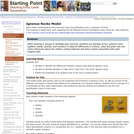
While working in groups to facilitate peer tutoring, students use samples of four igneous rocks (gabbro, basalt, granite, and rhyolite) to observe differences in texture, color and grain size and make inferences about the relative cooling histories and silica content associated with each magma type.
(Note: this resource was added to OER Commons as part of a batch upload of over 2,200 records. If you notice an issue with the quality of the metadata, please let us know by using the 'report' button and we will flag it for consideration.)

This course is based on the work of the MIT-African Internet Technology Initiative (MIT-AITI). MIT-AITI is an innovative approach by MIT students to integrate computers and internet technology into the education of students in African schools. The program focuses upon programming principles, cutting-edge internet technology, free open-source systems, and even an entrepreneurship seminar to introduce students in Africa to the power of information technology in today’s world.
MIT-AITI achieves this goal by sending MIT students to three African nations in order to teach both students and teachers through intensive classroom and lab sessions for six weeks. The AITI program is implemented with emphasis on classroom teaching, community-oriented projects, and independent learning.
This course has two major components:
Content from a spring 2005 preparatory seminar offered by the MIT-AITI leadership. The goal of this seminar is to adequately prepare the AITI student teachers for their upcoming summer experiences in Africa.
A snapshot of the summer 2005 MIT-AITI program. This includes the Java®-based curriculum that MIT-AITI ambassadors teach in Africa each year, as well as content from an entrepreneurship seminar offered concurrently with the IT class.
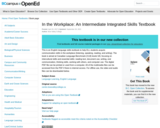
Interactive, integrated-skills, multimedia textbook. Texts are not authentic but genre-based (e.g., workplace forms). Appropriate for a low level class with a workplace focus. Level: 4 or more below TLEE; Skills: reading, vocabulary, listening, speaking, functional-notional
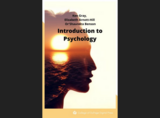
1st Ed.
Word Count: 282156
(Note: This resource's metadata has been created automatically by reformatting and/or combining the information that the author initially provided as part of a bulk import process.)
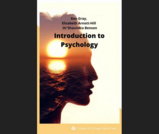
Word Count: 287060
(Note: This resource's metadata has been created automatically by reformatting and/or combining the information that the author initially provided as part of a bulk import process.)